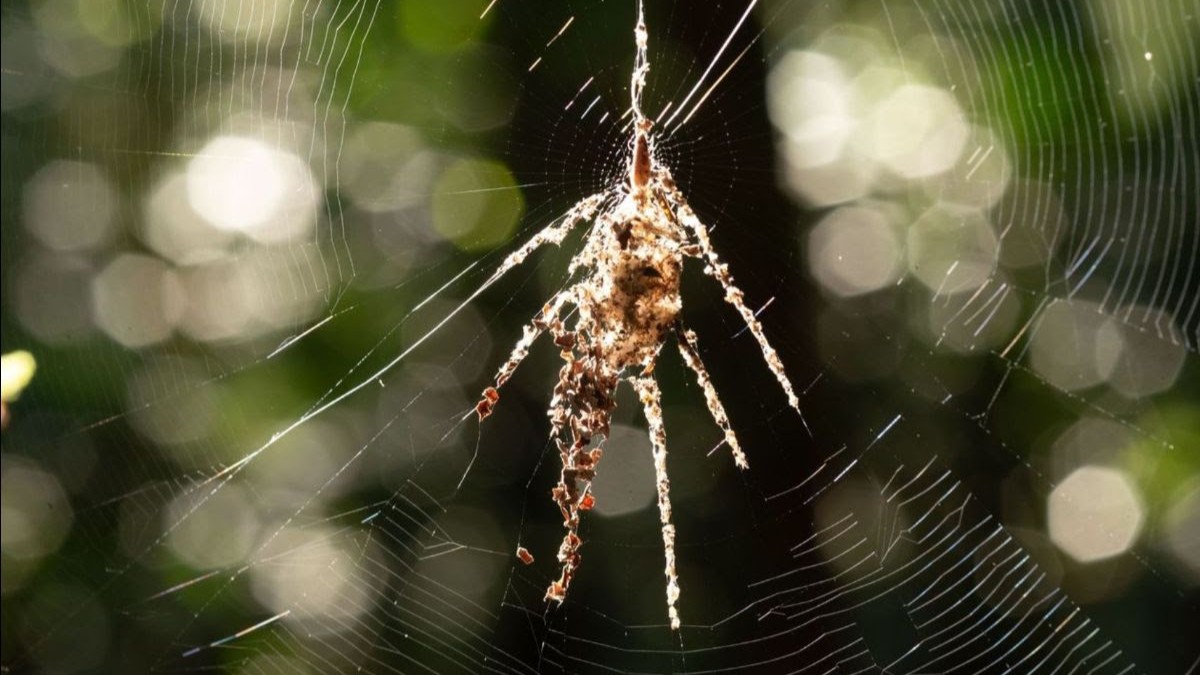Image Gallery: Remarkable Bionic Animals
Remarkable Bionic Animals
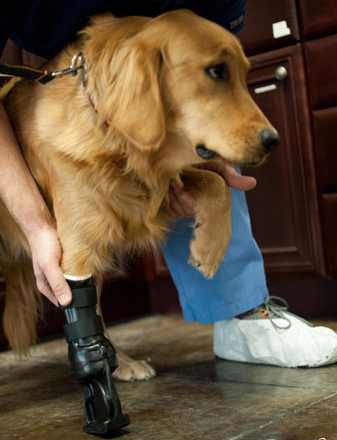
The rise of creature-tailored prosthetics — devices that replace a missing or non-working body part — and orthotics, which brace damaged limbs, have revolutionized veterinary medicine in recent years. From eagles to elephants, these implements have improved the lives of thousands of animals.
Oscar the Cat
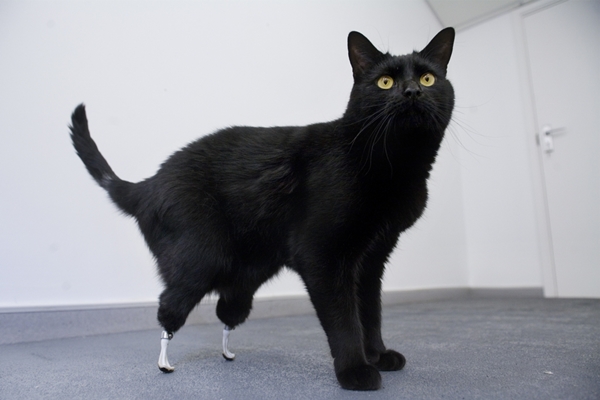
After a combine harvester severed both of Oscar's rear paws, the feline underwent surgery in November 2009. Noel Fitzpatrick, a neuro-orthopedic veterinary surgeon based in the United Kingdom, drilled holes in Oscar's remaining rear ankle bones and implanted titanium pegs called ITAPs. The procedure made Oscar the "first creature to our knowledge," Fitzpatrick said, to have bone- and skin-integrated implants placed in moving bone.
Midnite the Miniature Horse
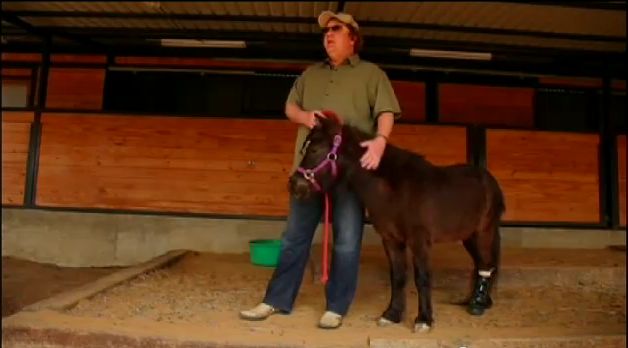
Midnite the miniature horse was born without one of his back legs. Abused by his owners, the tiny pony was rescued by law officials and given to volunteers at a charity ranch in Fort Worth, Texas. He was just weeks away from being put down when a local prosthetics company — that usually makes prosthetic devices for humans — agreed to make Midnite a new leg. After the fitting, the 4-year-old horse was able to gallop for the first time in his life.
Beauty the American Eagle
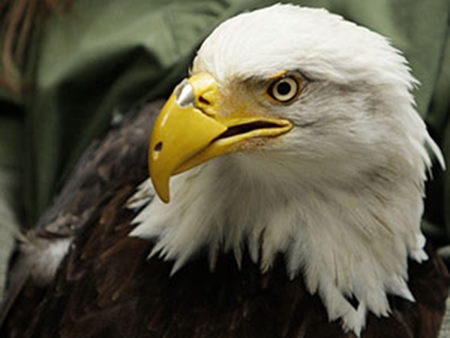
Four years ago, Beauty the American bald eagle was found starving in Alaska. A hunter had shot off the top part of her beak and she could not eat solid food, requiring hand- or tube-feeding. Nate Calvin of the Kinetic Engineering Group fashioned a plastic temporary beak from computer scans of a dental mold made of Beauty's jagged stump and an analysis of normal eagle beaks. The yellow-colored prosthetic was glued to a titanium base plate affixed to Beauty's stump. A full "final beak" made of titanium is planned.
Quad-Pod the llama
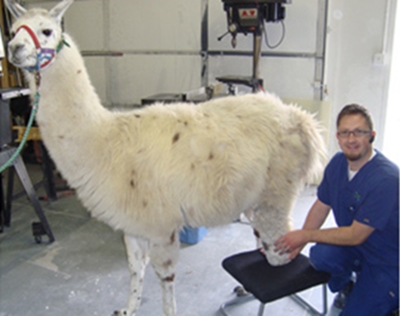
Quad-pod the llama's owners believe that he badly fracturing his left rear leg when he stepped into a hole while protecting their livestock from animal predators. The llama's injury required an amputation, but the vet surgeon left as much leg as possible below the hock to allow for a specially-designed prosthetic device. OrthoPets, a veterinary clinic that has been creating strap-on orthotics and prosthetics for a wide range of animals since 2003, made Quad-pod a crutches-like prosthetic that brackets the stump while still allowing the llama to flex the hock joint when walking.
Hoppa the Dog
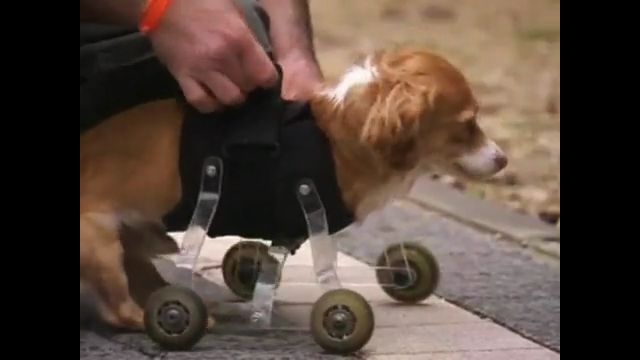
A 5-year-old mixed breed dog from Tel-Aviv, Israel, Hoppa was born without his front legs. The pooch had trouble getting around, so one of the owner's friends, an animal-loving art student, invented a special wheeling device just for Hoppa. The designer hopes that the gadget will improve the lives of other pets born with abnormalities or with amputated limbs.
Mosha the Elephant
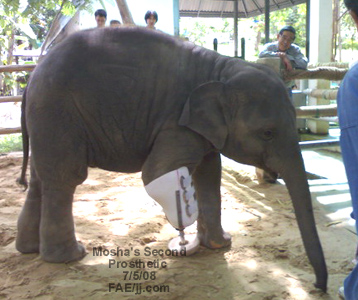
The first elephant in the world to be fitted with an artificial leg, Mosha was rescued after she stepped on a landmine when she was just seven months old. The baby elephant was brought to the Friends of the Asian Elephant hospital in Thailand, where doctors feared that she wouldn't survive if she remained unable to walk as she grew heavier with age. Therdchai Jivacate, who runs a foundation for human amputees, decided to try making a prosthetic limb for the elephant. In 2007, doctors at Jivacate's Prostheses Foundation successfully fitted Mosha with an artificial leg made out of plastic, sawdust and metal that was sturdy enough to carry her weight.
Get the world’s most fascinating discoveries delivered straight to your inbox.
Allison the Turtle
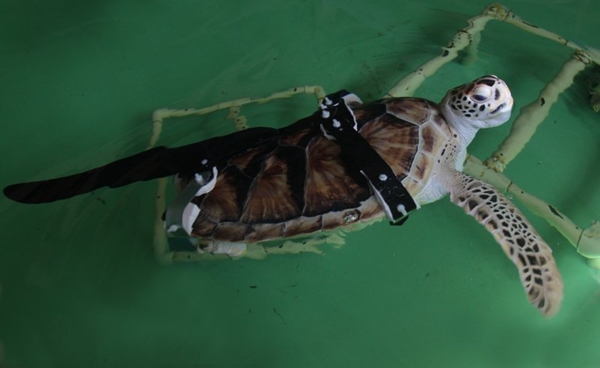
Allison, an Atlantic green turtle, was spotted by tourists adrift, bloodied and missing three of her flippers. Her injuries were likely caused by a predator attack. She was taken to Sea Turtle, Inc. a non-profit turtle rehabilitation organization in South Padre, Texas., where she could only swim in counterclockwise circles with her single front fin. Tom Wilson, an intern, had the idea to build a single, rudder-like fin that would extended behind Allison, stabilizing her body. The resin fiberglass fin allows Allison, now about six-and-a-half years old, to swim straight.
Naki'o the Pup
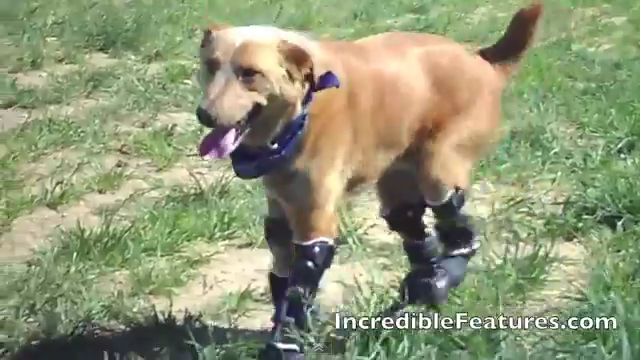
Naki'o is the world's first dog with four prosthetic paws. The Australian Cattle Dog was abandoned when his owners fled their foreclosed Nebraskan home, leaving Naki'o and his siblings alone in the house to face the cruel winter. Their mother died, and Naki’o stepped into a freezing puddle in the house's basement that caused him to lose all four paws to frostbite. After the 5-week-old pups were found and taken to an animal rescue center, Naki'o was adopted by veterinary technician Christie Tomlinson. Tomlinson organized a fundraiser to help pay for his four prosthetics, which were created by Orthopets.
Hope the Giraffe
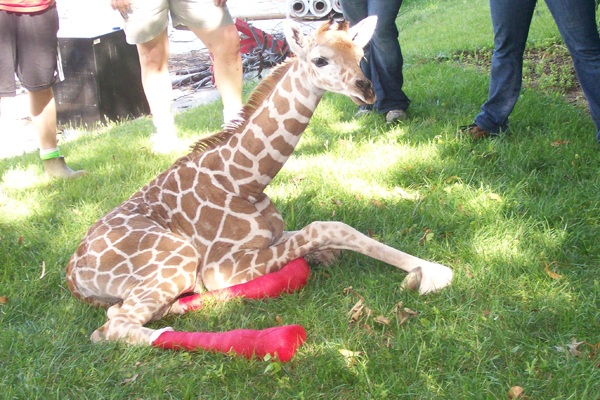
Hope the giraffe was born on July 2010 at the Topeka Zoo with a life-threatening hoof abnormality that left her lower joints bent at 90 degrees and dislocated. Unable to stand, she was casted for specially designed corrective shoes within two hours of her birth. The orthotic shoes were built with an external tendon system to keep Hope's hooves in proper alignment. The shoes compensated for the birth defect and the little giraffe responded so well to the treatment that she no longer needs the shoes to walk.
Fuji the Dolphin
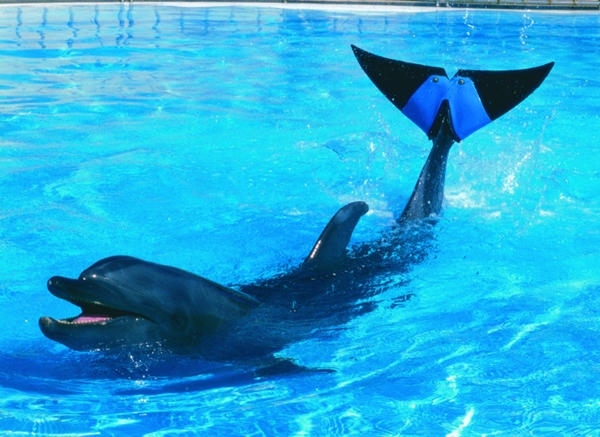
In 2002, a dolphin named Fuji at the Okinawa Churaumi Aquarium in Japan lost most of her tail due to a disease that left her unable to properly swim. The aquarium contacted Japan-based tire maker Bridgestone about crafting a prosthetic device for Fuji. Bridgestone researchers studied how a dolphin's two tail fins, or flukes, move in three dimensions with the same techniques used to design tires. After a number of prototypes, a water-resistant, reinforced silicon rubber version was created that allows Fuji to swim and propel herself completely out of the water in a jump.
